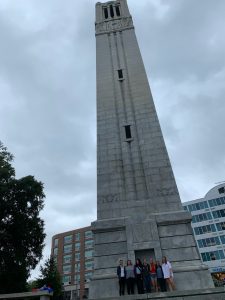
Self-Reflection #1
Before this class I had never heard of the Relational Leadership Model. Being a leader always seemed straight forward. Just take charge of a bunch of people and offer guidance when needed. Take on most of the responsibility, delegate tasks, and try not to be too bossy.
I never really thought of leadership as being more than a role to play or a notable trait someone exhibits. I never expected it to have so many different components. After the chapter reading and my own analysis, I realize that understanding the model’s purpose is simple. Each piece was designed to make a leader more well-rounded in various disciplines and encompass traits that will help others to succeed as well.
The five main components of the Relational Leadership Model include purpose, ethics, empowerment, inclusivity, and process-orientation. It is through these categories that leaders can bring people together and guide successfully. In my opinion, purpose is the most important component of the model. I feel that purpose is the driving force of any successful task or goal. As long as a leader has a purpose or vision, then they can begin to execute their plan. A plan without a driving force makes it nearly impossible to influence and direct a group efficiently. This could compare to a blind leading the blind scenario, which ultimately would not go well for either party.
Process orientation is also quite important to any project. In order to fulfill a vision, a successful leader needs to follow a path. Successful paths require help from the whole team and a level of teamwork that can only be achieved by the guidance of an organized leader. Process orientation helps to keep a group on track and allows the leader to coordinate their ideas and goals.
It is important to note that empowerment and inclusion are the more difficult components of the Relational Leadership Model to implement. They require a leader to encourage members to contribute their own talents and feel valued. A leader’s first instinct is to take charge, though this can be beneficial, it is one sided. If a leader takes too much control, it not only limits the success and diversity of the group, makes members feel they are not being heard. Leaders use inclusion to ensure that as they lead, they encourage others in their group to utilize their skills (Komives et al. 85-86). Other leaders use empowerment instead, in order to enable members to gain a sense of purpose (Komives et al. 90).
An immoral leader is hardly a leader at all. Ethics play a large role in ensuring that a leader considers their own morals when developing ideas. Although purpose and a process are important in the success of a group, morals help to form connections between a leader and their group members (Komives et al. 97).
According to the Relational Leadership Model, each of the components listed above are executed in three steps. These include knowing, being, and doing (Komives et al. 74). Having just learned about each of the core components, I consider myself to “know” the basics of the model. However, my experiences with being and doing are much more complicated.
My differences with the Relational Leadership Model come from my original and habitual ideas about leadership. Therefore, my use of each of the five components is very lopsided. I realize now that in being what I thought was the model leader, in some ways I was neglecting to lead. For example, I am a very process-oriented person. I always plan ahead and build in reminders to ensure I accomplish my goals on time. I am very driven, therefore, it is my belief that my actions are never executed without a purpose. My self-awareness of these skills makes me confident in my ability to apply the being and doing phases of my leadership strategies. However, I realize that my leadership experience is only half fulfilled. Throughout all my time as a leader, I have never really considered the ethical or inclusive sides of leadership. I know what they are, but struggle to apply them. In past leadership roles, I have always been very good at delegating. As a leader, I assumed telling people what to do was only natural, but I never considered how it made others feel. I have a similar problem with my use of ethics. To my knowledge I have never been unethical, but I realize that I never made a point to encompass more of my own morals in how I lead.
The service action proposal and my involvement in Impact Leadership Village will force me to practice the Relational Leadership Model. Inclusion, ethics, and empowerment are all components I struggle with, despite them being specifically stated in the service project rubric. I hope that by participating in ILV, I can learn to incorporate these three components so that I will be more confident and have a successful service project proposal. Even though some aspects of the model are harder to implement than others, that does not mean that any of the components are any less important. This is comparable to my leadership skills. I may struggle with fully incorporating the Relational Leadership Model, but that does not mean I will not be successful. From this point on, I can only expand my experience and learn to encompass all the traits needed to become well-rounded leader.
Works Cited
Komives, Susan R, Nance Lucas, and Timothy R. McMahon. Exploring Leadership: For College Students Who Want to Make a Difference. San Francisco: Jossey-Bass Publishers, 2007. Print.